Resource Centers
Using Cost of Quality to Make Improvements and Reduce Costs
A Cost of Quality effort supports an organization’s overall continuous improvement effort. A COQ Program translates the impact of quality issues into financial terms, identifies areas needing improvement, highlights the importance of Prevention activities and Appraisal tasks to combat potential failures and provides a means to track progress.
When the Cost of Quality % starts dropping, improved financial performance and customer satisfaction follow.
Reducing Cost of Quality % requires:
- Tracking performance,
- Using data to identify and prioritize improvement targets,
- Tackling the source of problems and;
- Refining elements of the Cost of Quality program by using feedback.
Track performance
When tracking progress, the key if to look for trends. The overall trend of the Cost of Quality % is important, not the absolute value.
- If the trend shows a steady reduction in Cost of Quality %, the absolute value will eventually be acceptable.
- Early on, increases in Prevention activities and probably Appraisal tasks should lead to corresponding reductions in both External Failures and Internal Failures.
- There is no standardized specific expected or acceptable rate of improvement. If the Cost of Quality % trends down, the effort is likely on track. However, if the trend reverses and the Cost of Quality % increases, something is amiss. Investigate and find out why.
- The Cost of Quality % will never reach zero. Even if a zero failure rate is achieved, Cost of Quality includes appraisal and prevention activities. While zero is a realistic goal for both Internal and External Failures, costs associated with some Appraisal tasks and, to a greater degree, Prevention activities will continue.
Use data to identify and prioritize improvement targets
- Once a COQ effort is underway, numerous improvement opportunities will quickly become apparent.
- A Pareto Chart can prioritize targets by identifying which ones have the greatest potential payback.
Tackling the source of problems
When tackling a problem, it is crucial to get to the source; the root cause is the source. A problem can be solved “for good” only when the root cause has been addressed.
- Mistake-proofing addresses the root cause.
- Strong mistake-proofing solutions (e.g. Forced Control Prevention solutions) prevent problem recurrence.
- Even relatively “weak” mistake-proofing solutions (e.g. Sensory Alert Detection solutions) will provide a proactive alert that the problem has resurfaced.
- Any mistake-proofing solution will lead to lasting reductions in COQ.
Refine elements of the COQ program.
As with any program, if a COQ effort is allowed to stay static, it will get stale.
Use the PDCA cycle to revisit the elements of the program and make adjustments to improve the efficiency and effectiveness of the COQ effort.
Build on what is working.
- When there is an opportunity to leverage a solution or breakthrough, it is like getting unexpected compound interest on an earlier investment.
- If successes are publicized and celebrated, the exposure increases the probability that someone else will find an application for its use.
Revisit what is not working.
- Perhaps more important than identifying successes that can be leveraged is finding process steps, techniques or practices that are holding the organization back or in conflict with the program.
- When a practice negates or cancels out part of the COQ effort, waste is generated that actually adds to the Cost of Quality.


